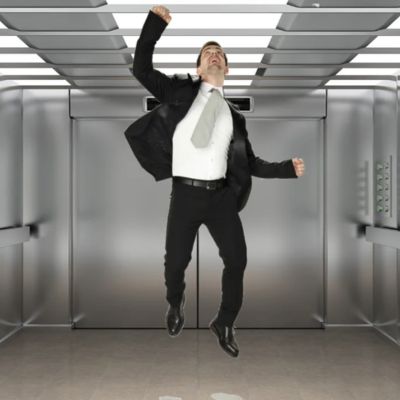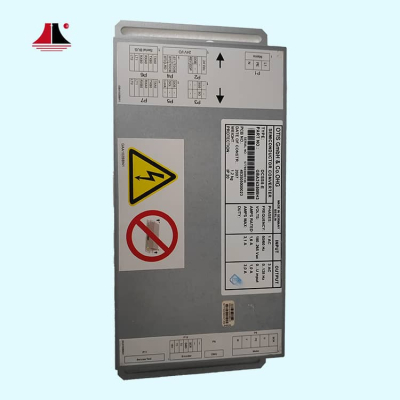Did an Elevator Really Crash from the 40th?
The Scary Elevator Drop
Imagine stepping into an elevator, expecting a smooth ride home—and suddenly, it drops from the 40th floor to the basement. That’s what reportedly happened in a residential building in Kunming, China. Luckily, no one was hurt, but the incident left passengers deeply shaken.
To anyone unfamiliar with how elevators work, this sounds like a terrifying free fall. But was it really a mechanical failure? As elevator professionals, we want to explain what likely happened, why such incidents are rarely as dangerous as they seem, and how modern elevators like those from FUJITA are designed with multiple layers of safety to prevent accidents.
Was It a Real Free Fall?
The short answer: No, the elevator didn’t actually fall.
Based on reports, the elevator stopped during travel due to a power outage. Once power returned, it moved to the lowest basement level. Passengers felt a jolt and saw they were now several floors below ground—and naturally assumed it had fallen.
In reality, this was likely an automatic recalibration:
lOlder elevators may not retain their position when power is cut.
lOnce power returns, the system doesn't know where the cab is.
lSo it slowly moves the cab to the lowest mechanical floor switch to reset its location.
This is a safety feature, not a failure. And in most cases, the elevator moves slowly and safely during this process.
Can an Elevator Really Fall?
Let’s clear up one of the biggest fears: the idea that an elevator can drop uncontrollably. In modern systems, this is nearly impossible.
1. Counterweight and Rope System
Elevators are balanced systems. The cab is attached to a counterweight via high-strength steel ropes. Think of it like a giant seesaw:
lThe counterweight = the cab weight + roughly 45% of its rated load.
lWhen the cab carries 4 or 5 people, the weight is nearly balanced.
lEven if the brakes fail, friction and weight distribution mean the cab typically doesn’t move.
2. Strong, Redundant Steel Ropes
Elevator ropes are engineered with extreme safety in mind:
lThe safety factor is 12x the rated load.
lThat means a rope can handle 12 times more weight than necessary.
lEven if multiple ropes snap—which is incredibly rare—the remaining ropes are still strong enough to hold the cab.
3. The Emergency Brake System: Speed Governor + Safety Gear
In the highly unlikely event that all ropes fail, there’s another line of defense:
lThe speed governor detects if the cab moves too fast.
lIt activates mechanical safety gear to clamp the cab to the rails.
lThis doesn’t depend on electricity or software—it's entirely mechanical and extremely reliable.
So no, elevators don't just “fall.” Even in the worst-case scenario, multiple safeguards kick in before disaster can happen.
The Real Risk
While people fear falling, a more realistic malfunction is the cab moving up too quickly, known as "overrun" or "over-speed upward movement."
This happens when the brake fails and the counterweight pulls the cab up. Fortunately, elevators are built to manage this, too:
lModern systems use something called a regenerative circuit (also called “motor shorting” or “dynamic braking”).
lWhen the motor stops unexpectedly, the system short-circuits the motor and turns it into a generator, creating resistance.
lThis keeps the cab speed under control—typically below 0.3 m/s—even if it tries to move on its own.
Why Old Elevators Are More Prone to Panic-Inducing Events
Let’s face it—older elevator systems just weren’t built with the smart technologies we have today.
lThey lack intelligent positioning systems, so they always return to the bottom floor after a power failure.
lThey may jolt or shake more when restarting.
lTheir safety systems might still work—but not as smoothly or quickly as newer models.
Upgrading to a modern elevator isn’t just about aesthetics or speed. It’s also about safety, comfort, and peace of mind.
What Can You Do to Stay Safe in an Elevator?
While engineers have done their part, as passengers we should follow basic safety guidelines too:
lNever ride an overloaded elevator—obey the weight limits posted inside the cab.
lCheck for the inspection sticker—every legal elevator must have a visible inspection certificate.
lDon’t attempt to escape during a power failure—modern elevators have backup systems and emergency intercoms. Wait for help.
lChoose reliable products and partners—a good elevator is only as good as its installation and maintenance.
Conclusion:
A sudden jolt in an elevator can be terrifying. But fear often comes from what we don’t understand. Now that you know more about how elevators actually work—and how unlikely a true “free fall” really is—we hope you feel more confident next time you step into a cab.
If you’re a building owner, developer, or homeowner thinking about installing or upgrading an elevator, don’t just look at the price tag or the logo on the panel. Look at the technology, the safety features, and the people behind the product.
Want to learn more about FUJITA’s elevator solutions? Get in touch with us today and discover how we make every ride smarter and safer.




